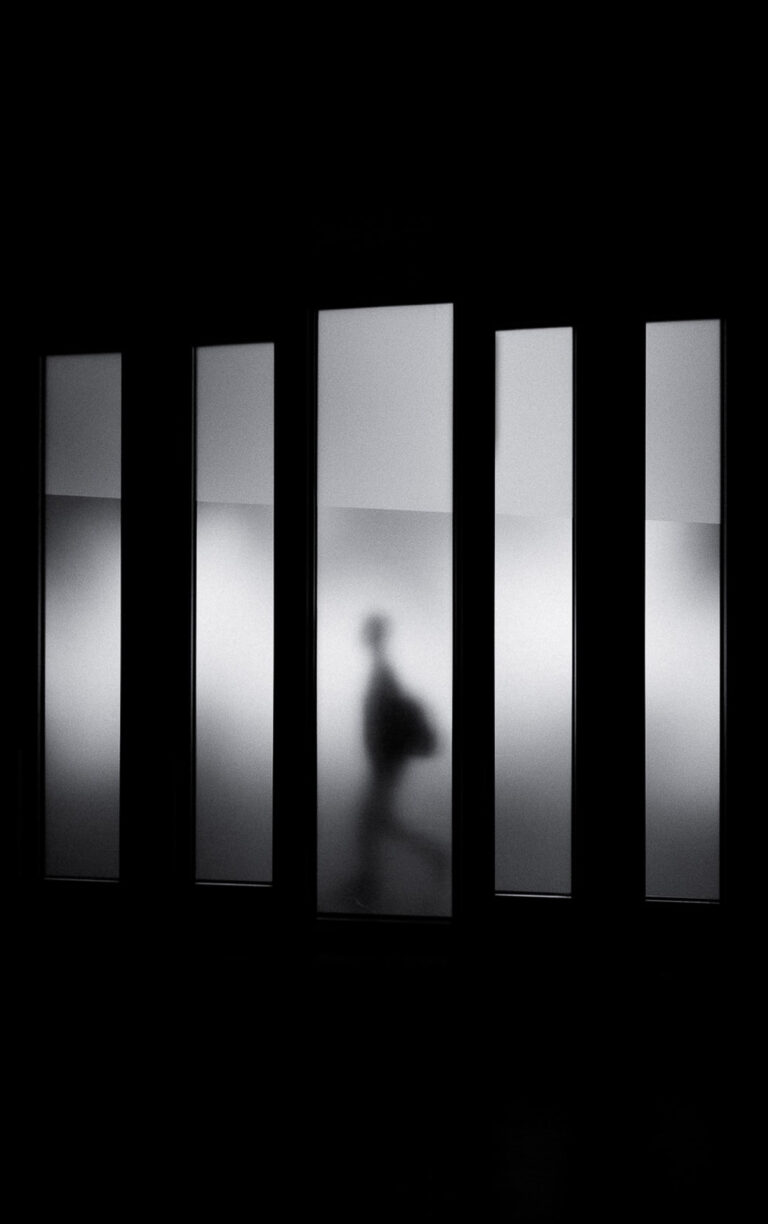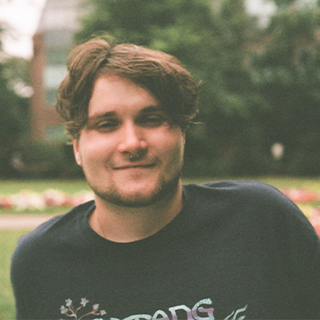
Opinion
Until we fix the current way we handle incelism, innocent people will continue to get hurt

By Jack Ramage
Opinion
Until we fix the current way we handle incelism, innocent people will continue to get hurt

By Jack Ramage
Published Aug 19, 2021 at 12:34 PM
Reading time: 5 minutes
Toxic masculinity
Aug 19, 2021
For much of the general public, the news which emerged from the devastating incident in Plymouth over the weekend is the first time the word ‘incel’ has passed their lips. For others, it can be heard on the fringes of the internet discourse—from niche subreddits to the anonymous boards of 4chan. I have to admit, at first I underestimated the tangible danger this ideology can cause when surfaced to the real world by extremists. The recent event in Plymouth is indicative of just how wrong I was—and how the misogynistic ideology of incelism shouldn’t be underestimated.
If you’re still not clued up on what the strange, and frankly sinister ideology of incelism is, let me fill you in. An incel is defined as a member of an online community of young men who consider themselves unable to attract women sexually, typically associated with views that are hostile towards women and men who are sexually active. Violent misogyny and belief that women should be held accountable for ‘depriving’ men of sex and relationships, to which they have ‘a human right’, is the bedrock of which the online subculture is based upon. These dangerous views, even if confined to the backwaters of fringe internet discourse, are worrying. Incelism in the US has links with the alt-right movement, and is considered by some to be a far-right, extremist ideology. What is more frightening, however, is that such views are surfacing into the real world; harming the lives of innocent people—particularly women—at an increasingly alarming rate. “Violence linked to the ideology has killed as many as 50 people in the US and Canada and sparked debate among counterterrorism experts and police,” reports The Guardian.
Although sources have confirmed that Jake Davison, who shot and killed five people and injured two others before shooting and killing himself on 12 August 2021, did not “clarify” himself as an incel, in a YouTube video he posted before the attack, which has since been taken down, he spoke of how “people similar to me have had nothing but themselves.” Likewise, it’s been reported that Davison was subscribed to the YouTube channel Incel TV which calls itself the place for “black pill and lookism content,” amassing a following of 17,000 subscribers. The term ‘lookism’, which is commonly thrown around in incel discourse can be described as prejudice or discrimination on the grounds of a person’s appearance.
And it’s that feeling of anger mixed with despair that perpetuates a nihilistic worldview, an ideology that can sometimes lead to aggression, violence and sadly the death of women. There have been several attacks linked to incels across the world in the last seven years. In 2018, a man in Canada drove a van along the pavement, killing 10 citizens. When in custody, he told officers that this was a reprisal for the dismal fact that he was “unable to get laid.” Yes, not all incels are violent and in many ways, some may argue they have a human right to be able to discuss their views within the parameters of the law. However, even if this toxic internet culture doesn’t trigger such violence, it’s easy to see how the views it perpetuates could justify violent actions.
Despite the clear interest in the incel ideology and the violent acts recently committed by Davison, Devon and Cornwall police said within hours of the killings that they are not being treated as a terror incident. This ignited fury online, with many arguing this shouldn’t be the case. Feminist writer and activist Laura Bates questioned the decision, stating that “this is terrorism.” She went on to argue, “If news reports about the shooter are accurate we are talking about an individual radicalised online into an extremist belief system who then acted on those beliefs to massacre people. This is terrorism. It is extremism. It is radicalisation.”
“The men who repeatedly carry out massacres in the name of this ideology are almost never described by the media or by police or seen by the justice system as terrorists. Until we see it as extremism and radicalisation, we won’t be able to commit the resources that we need to tackle it,” Bates concluded.
This is terrorism. If news reports about the shooter are accurate we are talking about an individual radicalised online into an extremist belief system who then acted on those beliefs to massacre people. This is terrorism. It is extremism. It is radicalisation.
— EverydaySexism (@EverydaySexism) August 13, 2021
And I don’t disagree with her, this is a tragic incident that is a result of extremism—a mentally unwell individual radicalised by an online ideology. But labelling it as such can also bring its own issues and can be more problematic than good. The problem lies, not within the labelling of radicalised individuals but in the amount of resources needed to tackle the problem (or more, the lack of resources allocated to sway radicalisation at this point in time and why the current models aren’t working). But we’ll get to that later… To better present my argument, let’s dive into the psychology of why these individuals are becoming radicalised in the first place.
Perceived vulnerability drives extremism
Siân Brooke, a Computational Social Scientist at London School of Economics (LSE) highlighted that the basis of incelism is ironically contradictory: “Their movement is meant to be about masculinity, but it’s so obsessed with femininity it’s only there to exist in opposition.” And that’s where the problem lies, the “movement is a victim of masculinity, but not in the way that they think they are. They think that because they are not the ‘alphas’ that they are the victims—but it’s that feeling of being the victim, the feeling of being less because you’re not the typical idea of masculinity, which is the issue.”
Brooke explained how extremism is built upon the idea of vulnerability—the feeling that individuals prone to radicalisation are being persecuted by the dominant group, something which is apparent in “both religious and misogynistic extremism.” A lot of these internet cultures, in particular incelism, like to think of themselves as having knowledge outside of the dominant lexicon—outside of the common framing of the world. State persecution justifies this feeling.
She went on to explain how, because extremism is also tied to the antithesis of widening political participation, as a result of feminism, “the intervention of the state then also serves in a political way” and can be perceived as a way to restrict the civil liberties, the right to protest and the right to have a problem with it. Brooke warned this can in turn radicalise people further, cementing incels in their views. “If the state police young white men on the internet because of their extremism,” for instance labelling them as terrorists, “it feeds into the idea that their extremism is then justified.”
It’s also important to keep in mind that the term “terrorist” has an incredible amount of emotional weight attached to it, and so while you can define a terrorist action, defining someone’s entire identity as being a terrorist is also problematic. Brooke highlighted how similar incidents of religious extremism have shown the label of ‘terrorist’ gives an individual a level of power. “By calling an incel a terrorist you’re putting in the same league of violence as armed militias,” she added.
Why we need to treat incelism as a public health issue
It’s important to not get emotionally lost in the labels. Instead, we have to think of these people as individuals: not just a binary categorisation. So, without labelling such groups as terrorists, how do we correctly tackle such a crucial problem? By no means should we play down the severity of the issue incelism entails—instead, we should look at how to prevent misogynistic extremism from the ground up.
Brooke and other social researchers advocate that, instead of having a securitisation model that feeds into the vulnerability felt by incels, we need to treat incelism as a public health issue in need of a public health approach. A vast body of research into extremism poses a three-tier model: primary, secondary, and tertiary approaches. The most persuasive argument for implementing this model, considering these different levels of approaches, is that religious extremism has shown us that over-policing of communities isn’t useful, and—as mentioned above—can in fact further radicalise people.
A bigger-picture example of this type of model in action in the UK would be the Prevent strategy—an educational model which primarily helps tackle stereotypes through the promotion of diversity and women’s visibility in the public sphere. This, supposedly, although Brooke admitted it is somewhat flawed, prevents misogynistic actions from developing.
The secondary stage happens more in the day-to-day: challenging misogynistic behaviour and sexism in everyday places, such as schools, workspaces and public spaces so that the behaviour is actively and subtly socially stigmatised before it propagates. Only then should tertiary action be taken to prevent more extreme cases of incelism, such as clamping down on the security of online forums. We need to urgently alter the narrative that this is an individual problem, as this only serves to validate incels’ vulnerability—this is a societal problem and it needs to be treated as such, collectively and sensitively.
It’s a complex web to untangle. Above all, my thoughts are with the victims—mostly women—who have been subjected to the extreme negativity brought by this rising misogynistic ideology. Although Bates and I may disagree on the use of the word terrorism to label such a, quite frankly, disgusting ideology, I wholeheartedly recommend you read her insightful book on Everyday Sexism. However, until we shift our public narrative on the issue and recognise that extremist incelism is in fact a public health issue, the ideology will continue to destroy the lives of innocent people for years to come.




